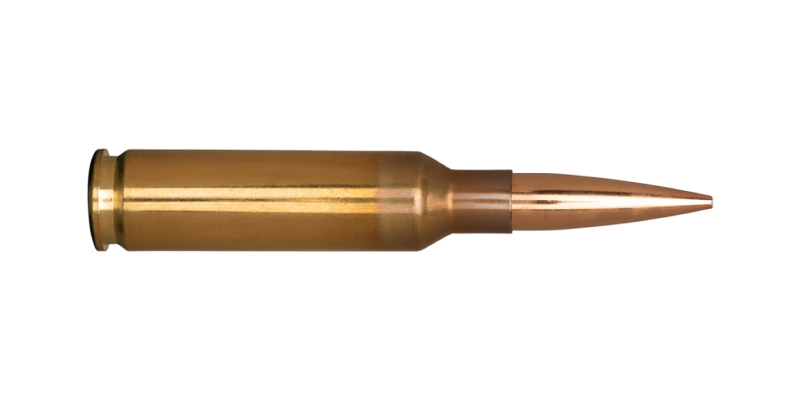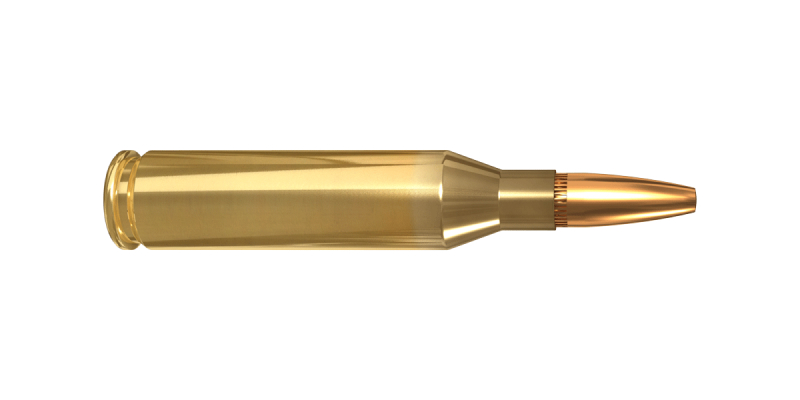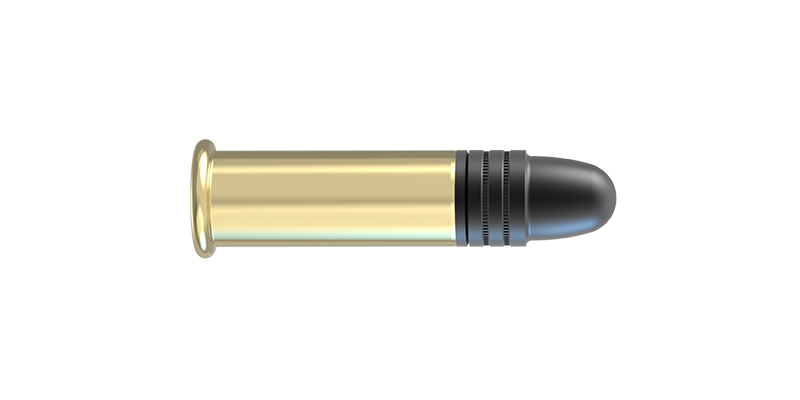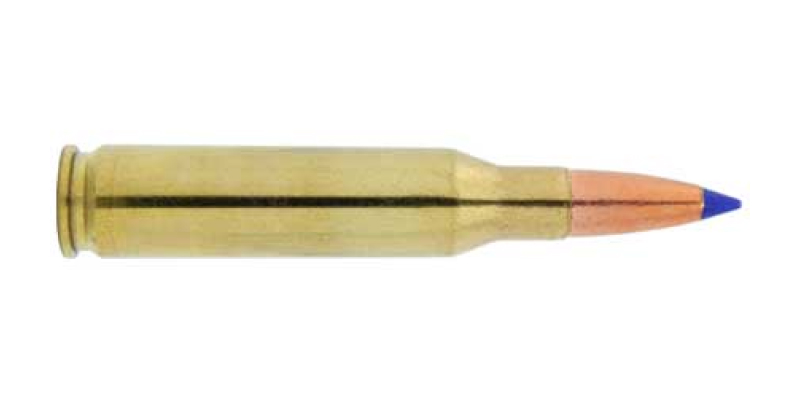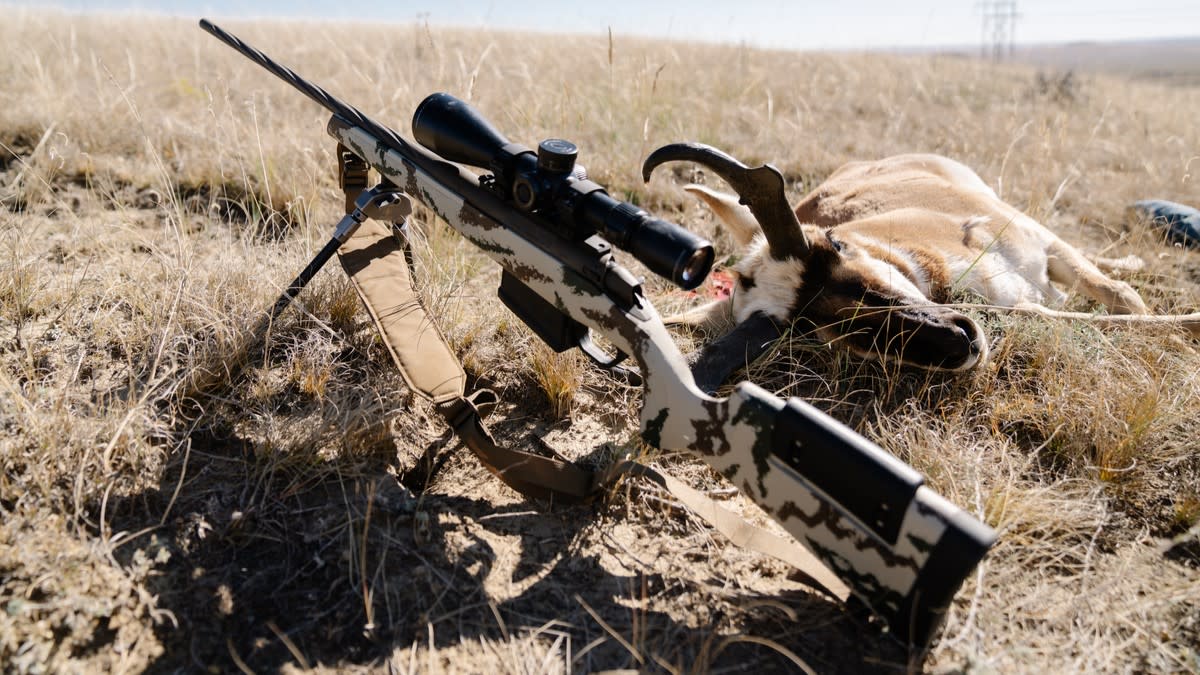
Nothing is more discouraging to a new hunter than a loud and intimidating rifle. If you’re hoping your kid will be confident and accurate from the deer blind, throwing them to the wolves with a .300 Winchester Magnum isn’t the way to go. It might make for a funny story when they’re older, but it’s a terrible way to recruit a future hunting buddy.
Fortunately, there are tons of great cartridges for youth hunters that are pleasant to shoot but still effective. These five are some of the best.
What We Look for in a Youth Rifle Caliber
For youth hunters, user-friendly recoil, minimal shot report, and efficacy are the name of the game.
Experienced hunters are already familiar with the recoil impulse of various cartridges, but if you’re considering a cartridge you’re unfamiliar with, you can find lots of comparative information online. For a general purpose deer rifle, look for something that produces less than 15 ft.-lbs. of recoil energy. Felt recoil is highly dependent on the weight of the gun, and some people have more or less tolerance for heavy recoil. But it’s generally true that more than 20 ft.-lbs. of felt recoil causes discomfort in even experienced hunters. If you’re dealing with a novice, you’ll want to lower those expectations even further.
Of course, you can dampen recoil with a heavier gun, recoil pad, muzzle brake, or a suppressor (see the Pro Tip, below). I’ve found that shooting position also makes a big difference. Awkward shooting positions can hammer a kid’s collarbone or produce the dreaded scope bite. Field positions are tricky, but if at all possible, try to make sure your youth hunter can shoot from a comfortable position with the rifle resting firmly in the shoulder pocket.
Shot report is less of an issue while wearing hearing protection, but the concussion of a cartridge explosion can still cause flinching and discomfort. The good news is that the same cartridges that produce limited recoil also tend to be quieter than their larger counterparts. Nothing larger than a subsonic .22 LR is really hearing-safe, but smaller cartridges won’t be able to penetrate hearing protection as easily.
Lastly, be sure that whatever cartridge you choose has enough juice to get the job done. That might sound obvious, and it’s true for all hunters–not just youth hunters. But depending on the temperament of the kid you’re hunting with, a wounded and/or unrecovered animal can be devastating. The experience might be so bad that the kid decides to abandon hunting altogether. That’s the outcome we’re all trying to avoid.
Jump to: Product Notes
Youth Rifle Calibers We Recommend
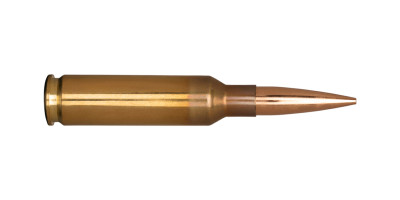 6.5 Creedmoor
|
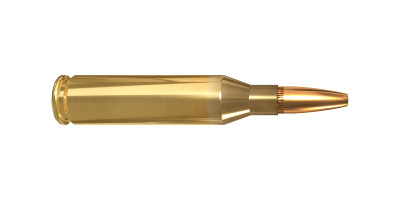 .243 Winchester
|
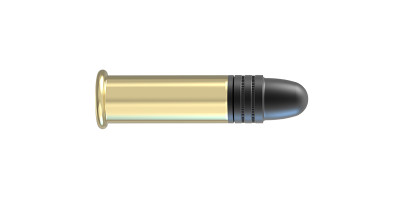 .22 LR |
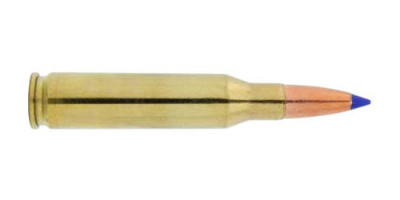 7mm-08 Remington
|
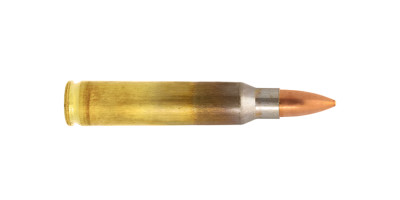 .223 Remington
|
|
|---|---|---|---|---|---|
| Highlight | Best for Big Game | Best for Deer | Best for Small Game | Most Underrated | Best Semi-Auto |
| Recoil (ft.-lbs.) | 13 | 11 | 0.2 | 13 | 4 |
| Muzzle Energy (ft.-lbs.) | 2350 | 1945 | 137 | 2525 | 1239 |
| Energy at 300 Yards (ft.-lbs.) | 1450 | 1087 | 50 Yards: 108 | 1480 | 635 |
| Cost Per Cartridge | $1.75* | $1.50* | $0.07* | $1.75* | $1.25* |
| Field Notes | Field Notes | Field Notes | Field Notes | Field Notes |
Pro Tip: Get a Suppressor
For any caliber, a suppressor can be a game-changer. Suppressors reduce recoil and shot report, the two things that cause flinching behind a trigger. It’s a great way to ease kids into shooting larger calibers, and it’s usually not prohibitively expensive to get a hunting rifle’s barrel threaded.
It’s true that purchasing a suppressor involves more paperwork and wait time than purchasing a firearm, but the process isn’t all that onerous. If you want to be sure your kid won’t abandon the deer woods for fear of a deer rifle, get them a suppressor and watch them outhunt you. For a rundown of how to purchase a suppressor, check out this guide.
Field notes from the MeatEater Crew
Best For Big Game
At the larger end of the spectrum, the 6.5 Creedmoor features a great recoil-to-power ratio that keeps shoulders bruise-free while ensuring a quick, clean kill. Brody Henderson was brought up under the old-school large caliber model, but these days he’s gravitated towards smaller but still effective cartridges.
“As a young deer hunter, I used everything from a 16-gauge shotgun loaded with slugs to a .30-30 to a .30-06. These days, there are better choices for youth hunters,” he said.
He argued that the 6.5 Creedmoor is a great long-range cartridge that produces mild recoil while maintaining the necessary energy to kill big game animals.
“With today’s selection of premium bullets, there’s no need to go with a bigger caliber, and the 6.5 Creedmoor considerably outperforms the smaller .243 Winchester,” Henderson said.
A decade of field work has proven the 6.5 as an effective big-game cartridge, but it only produces about 13 ft.-lbs. of recoil energy, give or take a few pounds depending on rifle weight and load charge. But its 140-grain bullet still packs a punch, traveling about 2750 feet-per-second (fps) and producing about 2,350 ft.-lbs. of energy at the muzzle.
A .30-06 Springfield, by contrast, produces about 18 ft.-lbs. of recoil while only generating 2,821 ft.-lbs. of energy at the muzzle with a 150-grain bullet.
Best for Deer
The .243 Winchester can’t compete with larger cartridges in terms of knock-down power, but it’s been the perfect deer cartridge for a long time, and nothing has changed. Janis Putelis said that while he has “stacks” of 6.5mm’s waiting for his daughters, they’ll most likely take their first big game animal (a doe whitetail) with a .243 Win.
“The .243 is light in recoil, so making the jump from .22 LR is not overwhelming,” he said. “That, coupled with today's super-performing bullets, makes the .243 Win. a solid choice for my lightweight, skinny-as-a-bean, young hunters.”
If you were to create the perfect entry-level rifle caliber for deer hunting, you’d probably come up with something like the .243 Win. The cartridge is usually loaded with bullets ranging from 55 to 100 grains, but these 90-grain Controlled Expansion Tip loads from Sig Sauer are in the cartridge’s sweet spot.
With a 100-yard zero, the bullet only drops about 10 inches at 300 yards, which means hunters can hold on-target all the way out to 300 if the rifle is zeroed a few inches high at 100. Plus, it has enough energy to make up for the occasional misplaced shot.
Check out our favorite youth deer hunting rifles.
Best for Small Game
No youth cartridge list would be complete without at least briefly mentioning the double-deuce. Its feather-light recoil is famously great for kids, and it has enough power to take small game like squirrels and rabbits out to about 50 yards.
Two characteristics make it stand out even further. First, it’s a great practice round for hunters of any age. Janis mentioned that his daughters use the .22 LR to hone their skills and get comfortable behind the trigger. Even competitive shooters use the .22 LR as a low-cost way to stay sharp, and the same is true for kids. If you want to make sure the youth hunters in your life are comfortable around firearms and develop good habits, a .22 LR is the way to go.
The double-deuce is also chambered in rifles that actually fit small bodies. Even mildly recoiling rifles can be painful if they’re too large to fit securely in the shoulder pocket. Knowing this, many gun companies make .22 LR rifles with shorter stocks and barrels to make sure kids are as comfortable as possible behind the trigger.
For a first squirrel rifle, you can’t beat the .22 LR.
Most Underrated
Like the 6.5 Creedmoor, the 7mm-08 Remington fires bullets in the 120- to 140-grain range about 2,800 fps and produces about 13 ft.-lbs. of recoil energy. Unlike the Creedmoor, the 7mm-08 hasn’t seen stunning commercial success since its adoption from a wildcat cartridge in 1980. That’s a shame. It’s an excellent option for youth hunters looking to step up to big game, and it’s a proven deer and elk killer.
You won’t find quite as many rifle or ammo options as the 6.5 Creedmoor, but it’s still widely available and inexpensive. If you already have a 7mm-08 rifle to hand down to your kid, don’t feel like you need to go out and buy one of the hot, new cartridges. The 6.5’s might do a bit better past 300 yards, but it’s unlikely a youth hunter will be taking those shots, anyway.
Best Semi-Auto
The .223 Remington is a moderately powered, light-recoiling cartridge that’s excellent for coyotes and varmints and can also step up to deer-sized animals (with the right bullet). But the real benefit of this cartridge is that it can be commonly found chambered in lightweight, easily customizable AR-style rifles.
The AR-15 is the most popular rifle in America for a reason. Any component of the rifle–from the trigger to the barrel to the grip to the stock–can be swapped out with nothing more than a few simple tools. This allows parents and guardians to customize the rifle to meet the needs of any sized youth hunter. The collapsible stock can be adjusted to achieve the correct length of pull, the optic can be swapped for an easy-to-use red dot or low-magnification optic, and the trigger can be changed to increase or decrease the pull weight. Plus, the buffer tube design minimizes the light recoil of the .223 Rem. even further, so youth shooters aren’t likely to be afraid of the recoil.
Putting a semi-auto rifle in the hands of a young hunter comes with increased safety concerns, so parents and guardians will want to pay special attention to the hunter and the gun after the shot goes bang. But with the right training, an AR chambered in .223 Rem. can be incredibly safe, effective, and fun for any youth hunter.
Last Shot
The rifle you choose for your youth hunter isn’t the most important part of a successful hunt, but the wrong rifle can ruin a kid’s day. While there are other great youth cartridges out there (the .30-30 Winchester and the .25-06 Rem. come to mind), we think these are five of the best.

